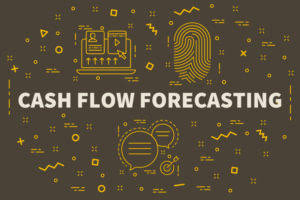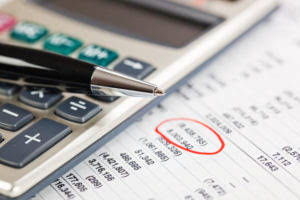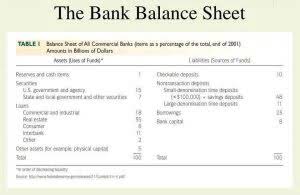Also, even though your business is brand new and hasn’t generated any revenue, you may still qualify for business financing. To assist you with this decision, I recommend that you get an introduction to the four common business structures by reading our small business structure guide. Your name must convey your brand since that is what a potential customer will see before they sit down with you for that initial consultation. Ensure your business name says exactly what you do; this is not the time to be cute—unless you can also be clear about what it is that you do. You’ll also need one year of experience before applying for the license. If you’ve had college accounting courses, you might be able to substitute them for required courses, but you’ll still need to pass each exam.
Where? Choose a location for your bookkeeping business
If you primarily use QuickBooks, for example, you might want to become a QuickBooks Certified ProAdvisor. Likewise, if you use Xero, you could become a Xero Certified Advisor. You’ll also need to think about your business name, as well as any certification options that will help boost your expertise and brand. Becoming a Certified QuickBooks ProAdvisor, for example, will help you stand out from the crowd. Your job as a bookkeeper is to break through that jargon and communicate clearly with your clients. Being a successful bookkeeper requires a unique blend of qualities, of which number-crunching is just one.
What are some key challenges in the bookkeeping business?
Think about some of the most successful brands—names like Apple, Nike, and Zoom are short, easy to pronounce, and stick in people’s minds. A simple name is also easier to incorporate into logos, social media handles, and other branding materials. For instance, your bookkeeper and accountant can collaborate to streamline tax preparation, quickly address potential issues, and ensure nothing slips through the cracks. With everything handled in-house, the process is far more efficient.
Understand your funding options
Critical advantages during the launch include no additional contracts and potential tax deductions. As you scale accounts, the separation between work and life improves focus to sustain quality output. These activities help create a competitive landscape analysis to inform your own service offerings and positioning.
While it’s tempting to offer your services online to a worldwide audience, it adds a lot of complexity to your operations. You should plan on paying for help with online advertising, web design, search engine optimization (SEO), and website content management. You will also Accounting For Architects create a financial plan that should include a 12-month profit and loss projection, a projected balance sheet, and the projected cash flow. A bookkeeping business typically falls under the category of service-based businesses.
How to Start a Bookkeeping Business in 2025: A Step-By-Step Guide
- Your bookkeeping system should provide the data you need to generate key financial reports.
- Once you’ve settled on a business name, you’ll need to register your business in the state in which you will do business.
- Also, even though your business is brand new and hasn’t generated any revenue, you may still qualify for business financing.
- Investors and potential acquirers will want to see a clear and comprehensive picture of your financial health.
- This expansion can help you take on more clients and offer additional services.
White label bookkeeping benefits include cost-effectiveness, scalability, and expertise. Set competitive pricing by analyzing the local market and considering the complexity of the services you offer. You may choose to charge a flat rate, hourly fees, or a monthly retainer.
How To Start A Bookkeeping Business (2025 Guide)
We recommend checking the availability of social media handles and domain names separately. You can refine your description or choose a different industry to get new suggestions. The tool is designed to generate as many options as you need until you find the perfect name. Elementor AI uses a combination of your business description and the industry you’ve selected to generate creative name ideas. It analyzes patterns and trends in language to come up with potential names that are unique, memorable, and suitable for your business. Discuss the options with friends, family, or business partners, and test the names by saying them out loud.
Bookkeeper duties
- Bookkeeping businesses help other business owners to maintain their business’ financial records.
- Experts say that you should always have at least six months’ worth of expenses in the bank.
- But your personal and professional networks likely offer considerable untapped business potential.
- Many clients will look for your website to find out about you and your experience.
While tedious, adequately insuring your bookkeeping venture earlier can pay dividends long-term. Anchor operations with this foundational financial protection before taking on precious client accounts and data. Consider enlisting an accountant or CPA to advise your practice, especially if new to owning a small business.

A certified public accountant (CPA) is a type of professional accountant with more training and experience than a typical accountant. Aspiring CPAs are expected to have a bachelor’s degree, more than two years of public accounting work experience, pass all four parts of the CPA exam and meet additional state-specific qualifications if required. In the U.S., licensed CPAs must have earned their designation from the American Institute of Certified Public Accountants (AICPA). These tasks are handled by the billing clerk, payables clerk, cashier, and payroll clerk, respectively. The first step in the accounting process is identifying invoices, bills and expense vouchers that are proof of business transactions.
Professional qualifications
Certain high-volume transactions, such as customer billings, may be stored in a subledger, with only its totals rolling into the general ledger. The ending balances in the general ledger may be altered with adjusting entries each month, mostly to record expenses incurred but not yet recorded. No, Accounting is simply the process of recording and maintaining books of accounts. Accountancy deals with the forecasting of future profit and business performances based on financial information provided. Accounting can be defined as a process of reporting, recording, interpreting and summarising economic data. The introduction of accounting helps the decision-makers of a company to make effective choices, by providing information on the financial status of the business.
- In short, accountancy involves each of the preceding tasks – recordation, classification, and reporting.
- Then the costs and revenues are compared to find out the profit or loss of the business.
- Accounting is the process of recording financial transactions pertaining to a business.
- Financial scams and frauds in accounting practices have drawn attention of the users of the accounting information supplied by business enterprises.
- The first, the accrual basis method of accounting, has been discussed above.
What Types of Careers Are in the Accounting Field?
A transaction is a complete action, to an expected or possible future action. In every transaction, there is a movement of value from one source to another. For instance, inventory should be valued on the basis of ‘least of the cost and market price’ as per the principle of conservatism. Accounting information is not without personal influence or bias of the accountant. In measuring income, accountant has a choice between different methods of inventory valuation, deprecation methods, treatment of capital and revenue items etc. Hence, due to the lack of objectivity income arrived at may not be correct in certain cases.
Creative Accounting

Increasingly, companies are including additional information about environmental impacts and risks, employees, community involvement, philanthropic activities, and consumer safety. Much of the reporting of such information is voluntary, especially in the United States. Journal is the first book of original entry in how is sales tax calculated which all transactions are recorded event-wise and date-wise and presents a historical record of all monetary transactions.

Double Entry System
It is so because money obtained from shareholders and long-term creditors comes at a cost. All records are made in a significant manner and in terms of money. It is important that these records must be made in a significant (i.e., organized and methodical) manner in order to be of any real use to a business unit. If an event has a financial implication for a business unit, it must make a record of such an event. Tax accounts may also lean in on state or county taxes as outlined by the jurisdiction in which the business conducts business. Foreign companies must comply with tax guidance in the countries in which they must file a return.
Accounting converts business transactions in money terms, classifies and records transactions in the books of accounts, and summarizes transactions. This focuses on the use and interpretation of financial information to make sound business decisions. It’s similar to financial accounting, but this time, it’s reserved for internal use, and financial statements are made more frequently to evaluate and interpret financial performance. The results of the efforts of the preceding accountants are accumulated into a set of accounting records, of which the summary document is the general ledger. The general ledger consists of a number of accounts, each of which stores information about a particular type of transaction, such as product sales, depreciation expense, accounts receivable, debt, and so on.
Conflict Between Accounting Principles

As a result, all professional accounting designations are the culmination of years of study and rigorous examinations combined with a minimum number of years of practical accounting experience. Freshbook is one of the easiest accounting software systems to use. Another easy to use option that’s perfect for self-employed entrepreneurs who need an affordable accounting solution is Neat. In short, accountancy involves each of the preceding tasks – recordation, classification, and reporting. what is accountancy Accountancy definition as per collins dictionary is accountancy is a profession of an accountant. All content on this website, including dictionary, thesaurus, literature, geography, and other reference data is for informational purposes only.
- Financial accounts have two different sets of rules they can choose to follow.
- We actually encounter or apply accounting in our daily lives – in budgeting, computing household expenses, checking bank balances, counting change, and many more.
- Amanda Bellucco-Chatham is an editor, writer, and fact-checker with years of experience researching personal finance topics.
- These systems can be cloud based and available on demand via application or browser, or available as software installed on specific computers or local servers, often referred to as on-premise.
- Specialties include general financial planning, career development, lending, retirement, tax preparation, and credit.
- For example, hiring an additional employee is qualitative information with no financial character.
At Finance Strategists, we partner with financial experts to ensure the accuracy of our financial content. 11 Financial is a registered investment adviser located in Lufkin, Texas. 11 Financial may Bookkeeping for Chiropractors only transact business in those states in which it is registered, or qualifies for an exemption or exclusion from registration requirements. 11 Financial’s website is limited to the dissemination of general information pertaining to its advisory services, together with access to additional investment-related information, publications, and links. For the purpose of interpreting and explaining the accounts, a number of tools or techniques can be utilized.
First, the straight-line depreciation rate is determined by dividing 100% by the asset’s useful life. For example, an asset with a five-year useful life has a straight-line rate of 20%. This rate is then doubled to produce the double declining rate, which, in this case, would be 40%. Through this what is the liability to equity ratio of chester example, we can see how the DDB method allocates a larger depreciation expense in the early years and gradually reduces it over the asset’s useful life.
Great! The Financial Professional Will Get Back To You Soon.
- It is advisable to consult with a professional accountant to ensure that depreciation is accurately recorded in compliance with accounting standards and regulations.
- Finance Strategists has an advertising relationship with some of the companies included on this website.
- So, if an asset cost $1,000, you might write off $100 every year for 10 years.
- Double Declining Balance (DDB) depreciation is a method of accelerated depreciation that allows for greater depreciation expenses in the initial years of an asset’s life.
- However, if the company later goes on to sell that asset for more than its value on the company’s books, it must pay taxes on the difference as a capital gain.
This is done by subtracting the salvage value from the purchase cost of the asset, then dividing it by the useful life of the asset. If you make estimated quarterly payments, you’re required to predict your income each year. Since the double declining balance method has you writing off a different amount each year, you may find yourself crunching more numbers to get the right amount. You’ll also need to take into account how each year’s depreciation affects your cash flow. Every year you write off part of a depreciable asset using double declining balance, you subtract the amount you wrote off from the asset’s book value on your balance sheet.
Composite depreciation method
Using the double declining balance method, the depreciation rate would be twice the straight-line rate, or 20%. In summary, understanding double declining balance depreciation is crucial for making informed financial decisions. It’s a method that can provide significant benefits, especially for assets that depreciate quickly.
Straight-line depreciation
For example, if an asset has a salvage value of $8000 and is valued in the books at $10,000 at the start of its last accounting year. In the final year, the asset will be further depreciated by $2000, ignoring the rate of depreciation. An exception to this rule is when an asset is disposed before its final year of its useful life, i.e. in bookkeeping questions one of its middle years. In that case, we will charge depreciation only for the time the asset was still in use (partial year). Like in the first year calculation, we will use a time factor for the number of months the asset was in use but multiply it by its carrying value at the start of the period instead of its cost. This is because, unlike the straight-line method, the depreciation expense under the double-declining method is not charged evenly over the asset’s useful life.
- We now know the formula for calculating the depreciable cost for subsequent years, so let’s calculate the depreciable cost for year two.
- On the other hand, with the double declining balance depreciation method, you write off a large depreciation expense in the early years, right after you’ve purchased an asset, and less each year after that.
- Choosing the right depreciation method is essential for accurate financial reporting and strategic tax planning.
- Some systems specify lives based on classes of property defined by the tax authority.
- The double declining balance (DDB) method is a depreciation technique designed to account for the rapid loss of value in certain assets.
What is your current financial priority?
Canada Revenue Agency specifies numerous classes based on the type of property and how it is used. Under the United States depreciation system, the Internal Revenue Service publishes a detailed guide which includes a table of asset lives and the applicable conventions. The table also incorporates specified lives for certain commonly used assets (e.g., office furniture, computers, automobiles) which override the business use lives. Depreciation first becomes deductible when an asset is placed in service. The straight-line depreciation is calculated by dividing the difference between assets pagal sale cost and its expected salvage value by the number of years for its expected useful life. The DDB method contrasts sharply with the straight-line method, where the depreciation expense is evenly spread over the asset’s useful life.
Step 1: Compute the Double Declining Rate
You can calculate the double declining rate by dividing 1 by the asset’s life—which gives you the straight-line rate—and then multiplying that rate by 2. There are four different depreciation methods used today, and I discuss these in the last section of my Beginner’s Guide to Depreciation. The above image doesn’t a much better job of explaining switching depreciation methods than mere words alone. At the end of the second year, we subtract the first year’s depreciation from the asset’s cost, and then apply 40% to that number. To calculate it, you take the asset’s starting value, find its useful life, and then multiply the starting value by double the straight-line rate.
How To Calculate Double Declining Balance Depreciation
The choice between these methods depends on the nature of the asset and the company’s financial strategies. DDB is preferable for assets that lose their value quickly, while the straight-line method is more suited for assets with a steady rate of depreciation. Next, divide the annual depreciation expense (from Step 1) by the purchase cost of the asset to find the straight line depreciation rate. To calculate the depreciation expense for the first year, we need to apply the rate of depreciation (50%) to the cost of the asset ($2000) and multiply the answer with the time factor (3/12). Where you subtract the salvage value of an asset from its equity definition original cost and divide the resulting number– the asset’s depreciable base– by the number of years in its useful life.
